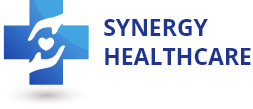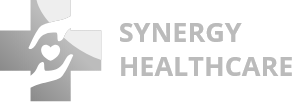Effective accounts receivable (AR) management is oxygen to the survival of a successful healthcare practice. As the billing environment becomes more complicated, healthcare providers are on a new mission to enhance their revenue cycle and collect the max amount of AR dollars possible. The strategic utilization of data enables organizations to create efficiency, reduce claim denials, and improve cash flow. In this blog, let us explore how data analytics is utilized through Synergy HCLS to increase AR collection rates and establish financial stability for healthcare organizations.

Understanding AR Collection Rates and Their Importance
Accounts receivable (AR) collection requires serious observation as it is a key performance indicator that expresses how well the revenue cycle management (RCM) of a healthcare organization works. It is the ratio of collected payments to total revenue received. Low average collection rate (AR) implies that the operations are not as efficient, uses up cash flow, and loses revenue. Hence, increasing the collection of accounts receivable (AR) is a key area for providers focusing on sustainable financial vitality.
The Power of Data-Driven Strategies
Hence, this can be an optimal approach resulting besides more accurate information. When it comes to AR collection rates management, this translates to using technology to monitor, assess, and fine-tune every element of the revenue cycle. Using data-driven strategies, healthcare providers are able to:
Identify historical data to predict payment processing outcomes.
Focus on critical areas of improvements that can maximize productivity.
Target specific areas for improvement to increase efficiency.
Synergy HCLS is Innovate Your Accounts Receivable. Committed to tailoring data-driven analytics to optimize an AR collection rates to know and drive the best results for clients.
Data-Driven Tactics To Improve AR Collection Rates
1. Comprehensive Data Analysis: The first step in identifying inefficiencies is analyzing detailed billing and payment data. Analyzing claims data enables healthcare providers to identify issues that lead to denials and delays in payment. Synergy HCLS carries out a detailed and targeted analysis that identifies specific problem areas for intervention.
For instance, consider a clinic where coders commit a lot of mistakes — This can results in a considerable amount of claim denials. Using data analysis methods, Synergy HCLS determines the exact codes that need correction and fixes them.
2. Predictive Analytics for Forecasting Payments: Predictive analysis uses a person’s data history to predict trends in the future payments he could organize up and develop. With this capability, health care provider can estimate whether it is more likely in advance to have a claim accepted or rejected. The predictive model will help prioritize those claims requiring further review but also those chances that are higher-risk and currently have not yet been implemented: these reforms can decrease denials (and thus cost) as well as increase cash flow.
Example: A predictive model can identify claims that are highly likely to be rejected because the documentation is incomplete, prompting corrective action before submission.
3.Task Automation and Automated Workflows: Automating AR management processes will make collections a better service to the customer—and a more lucrative proposition both in real life terms and from human nature’s perspective. Automation tools based on data are designed to prioritize tasks according courtesy importance and financial impact that lead staff into meaningful pursuits.
Example: Automated reminders for follow-ups on unpaid claims and claims approach timely filing deadlines.
4. Denial Management Improvement: Effective denial management means better AR collection rates. Data analytics can determine the root causes of claims rejections, give them a category, and implement measures to avoid future occurrences.
Key Actions:
- Tracking denial rates by payer.
- Analyzing common reasons for claim rejections.
- Implementing corrective actions to reduce errors.
Synergy HCLS employs a state-of-the-art denial management strategy: continuing improvement features in its design ensure that healthcare providers get the maximum amount of economic return for their work.
5.Process Optimization for Patient Payments: Patient balances now account for an increasing share of the healthcare AR. Cost-efficient solutions driven by modern data information systems will streamline patient payment processes by offering improved billing transparency and adaptable payment methods.
Example: Implementing online payment portals and using information from patients to send automatic reminders about payments to be made.
6. Monitoring Key Performance Indicators (KPIs): Monitoring KPIs is the essence of understanding AR performance. Numbers such as days in AR, percentage of claims denials, and collection rates provide invaluable insight.
Important KPIs:
- Days in AR: Measures how rapidly receivablesare collected.
- First-pass resolution rate: Shows the percentage of claims paid on their initial submission.
Synergy HCLS keeps track of these KPIs, letting them always fine-tune strategies and deliver better outcomes to healthcare providers.
The Role of Technology in AR Management
Technology plays allimportant role in running a data-driven operation properly. Advanced tools and software platforms improve AR management accuracy, speed, and efficiency as well. Key technological solutions are:
- Revenue Cycle Management (RCM) Software: Integrates billing, coding, and collections into one platform.
- Data Visualization Tools: Provides clear and actionable insights into how the performance of AR is doing.
- Artificial Intelligence (AI) and Machine Learning: Automates routine tasks and improves predictive accuracy.
Synergy HCLS relies on state-of-the-art technology to achieve collection rates superior to those of typical AR vendees. It provides full-scale solutions that are tailor-made for customers, easy to use, and scalable from the start.
Why Choose Synergy HCLS for Your AR collection rates Management Solution?
Synergy HCLS is a leader in healthcare RCM services, combining expertise with technology and personalized tactics. Here’s how working together with Synergy HCLS can make a difference:
- Proven Expertise: Decades of experience in complex AR portfolio management.
- Custom Solutions: Solutions tailored to your specific institutional goal.
- Continuous Improvement: Always fast analysis with frequent strategy changes as required by the new regulations and different needs of payers.
Benefits of Improving AR Collection Rates
Higher AR collection rates will improve both a company’s financial health and operational efficiency. Great benefits include:
- Increased Cash Flow: More available investment capital due to faster collections.
- Reduced Denials: Proactive strategies prevent claim rejections.
- Improved Patient Satisfaction: Better patient experience through streamlined billing and payment procedures.
- Regulatory Compliance: Accurate auditing and coding help lower If we are extra clear business risks.
Conclusion
Data-driven strategies are changing how the healthcare industry collects AR. By applying predictive analytics, automation, or similar methods, organizations can boost efficiency while reducing claim denials and increasing their cash flow. Synergy HCLS is a leader in providing innovative solutions that optimize AR collection rates and deliver tangible results.
Using these techniques not only results in better financial outcomes, but also increased overall operational efficiency. In this way, healthcare providers have more time to focus on giving their patients a great experience. Contact us now: With data-driven strategies you too can revolutionize AR management and achieve success.


